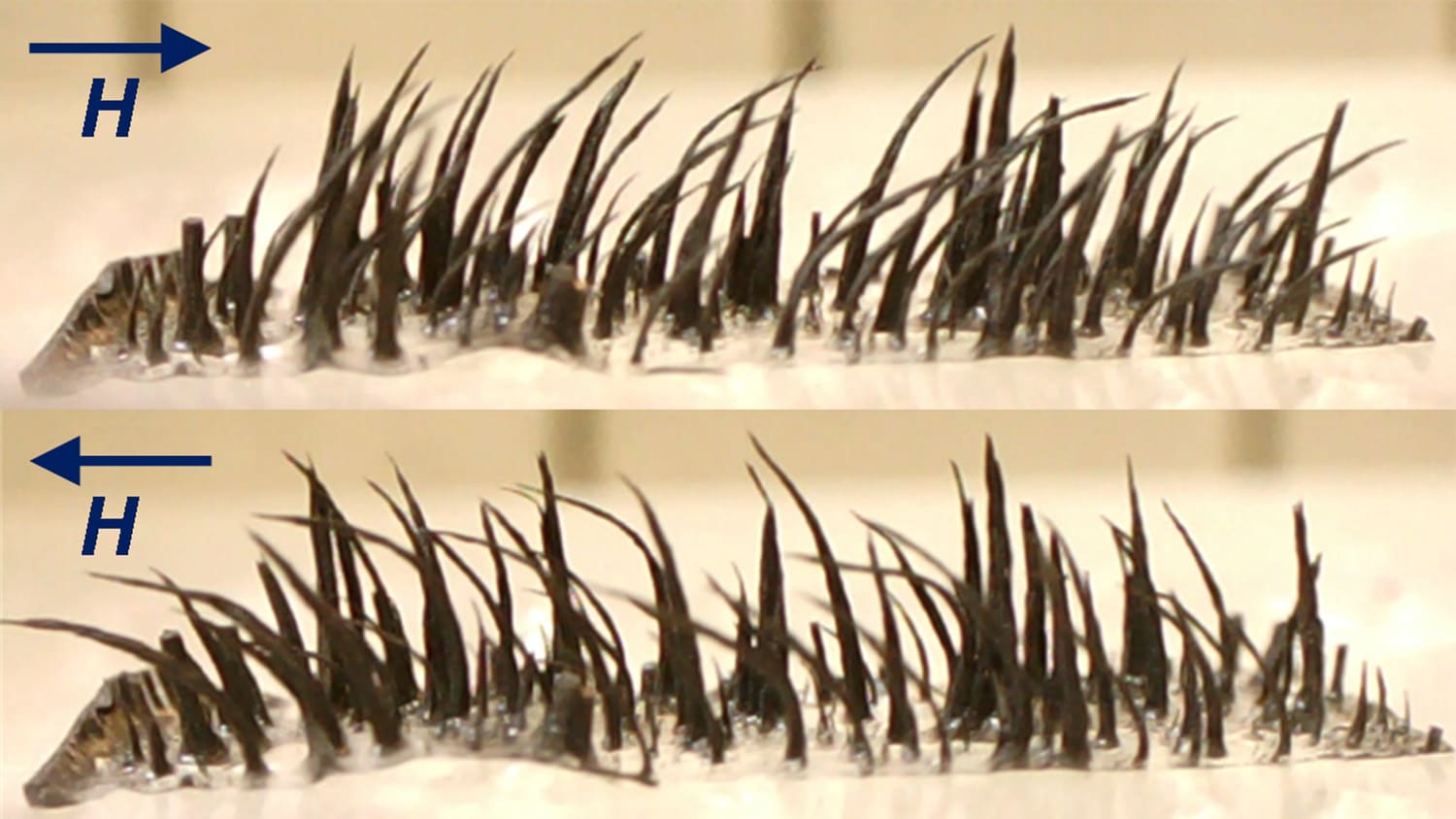How Magnets Work (It’s Complicated)

Occasionally, when looking for scientific issues to write about, I will survey my friends to see whether they have any “fundamental science” questions that I could explore. When someone recently suggested that I find out how magnets work, I thought it would be easy. I was wrong.
First of all, I learned that there are different kinds of magnetism: ferromagnetism, ferrimagnetism, etc. The difference depends on whether or not a material contains atoms that themselves act as tiny magnets, and whether or not these “atomic magnets” are lined up in a regular pattern. One must also distinguish between electromagnets and objects that have an intrinsic magnetism (meaning objects that are permanently magnetized). The more I talked to people, the more I realized that I was going to have to come up with a more specific question than: “How do magnets work?” So, I came up with this: “Why does my Philadelphia Eagles magnet stick to my refrigerator?”
When you talk about magnets, you are generally talking about objects that are either ferromagnetic or ferrimagnetic. Refrigerator magnets are usually made from materials that are ferrimagnetic. Similarly, refrigerator magnets are made of a material that is permanently magnetized – they don’t use an electric current to generate a magnetic field. But what is a magnetic field?
A magnetic field can be thought of as a “force field” that exists in the space surrounding a magnetic object. It is this force field that attracts or repels other magnets or magnetic objects – like a horseshoe magnet zapping up a pile of paperclips. So, where does the magnetic field come from?
Stuff – all stuff – is made up of atoms. And orbiting the nucleus of these atoms are electrons, which are constantly on the go. Just as electrons have charge (after all, it is the attraction between the negatively-charged electron and the positively-charged nucleus that holds the atom together), electrons also act as tiny magnets. This results from a property called “spin.” The name suggests the idea of the electron spinning just as the earth spins on its axis, but we now know that this is not really an accurate picture. It’s best simply to consider spin as one of the fundamental properties of electrons, on the same footing with charge.
We do know that the more electrons you have aligned magnetically in an atom, the stronger the magnetic field. (Picture each electron as a tiny bar magnet. Now picture them pointing in the same direction.) The same holds true at a higher level – the more atoms per unit of volume you have magnetically aligned, the greater the magnetic field. The distinguishing feature of ferromagnets and ferrimagnets is that they have patterns of aligned atoms that result in strong magnetic fields. But why does the magnetic field in a magnet want to stick to my fridge? Or, conversely, why doesn’t everything want to stick to my fridge?
The answer to the second question is because many materials that CAN be magnetized are often NOT magnetized. The magnetic fields generated by those materials’ electrons effectively cancel each other. Basically, the magnetic poles of microscopic groups of atoms (called domains) are out of alignment with each other – effectively creating closed magnetic circuits. End result: the overall material has a net magnetism of essentially zero. My refrigerator door is like that. Its atoms have magnetic properties, but taken as a whole, the fridge door is not magnetic.
However, in the presence of an external magnetic field (e.g., the field from my Eagles magnet), the unaligned magnetic domains in my fridge door will begin to respond and come into alignment. When that alignment takes place, the fridge door becomes magnetic, and is then attracted to the refrigerator magnet. The resulting force holds the magnet onto the refrigerator. When you take the magnet off the fridge, the domains of the metal on the fridge door will (usually) return to their previous, disordered alignment – and lose their magnetic field.
Note: Many thanks to Dr. Dan Stancil, head of NC State’s Department of Electrical and Computer Engineering (and co-author of Spin Waves), and Dr. Joe Tracy, assistant professor of materials science and engineering at NC State, for taking the time to talk to me about magnets. They were patient in their explanations, and kindly highlighted just how little I knew. Any errors in the above post are mine and mine alone.
- Categories:


